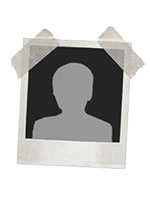“There is no such thing as human superiority.” – Dwight Eisenhower (Supreme Allied Commander WW II Europe, and 34th President)
Humans are generally positioned as the baseline to which other species are compared, no doubt because humans are playing the game. Dungeons & Dragons famously centered humans as the “main” species lest the game turn into less fantasy medieval and more abstract fantasy – all of which seems quaint now given the dizzying variety of fantasy worlds in books and on screen. But there are other reasons why humans might logically be more common in a fantasy world, and which reasons you choose can set the tone for your game.
Magical Proficiency
My first answer is humans can use magic much more proficiently than any rival. Not every species can learn more, and more complex, spells, and use magical items. Originally in RPGs there were level limits for nonhuman playable species (often wrongly called races) such as elves and dwarves. This helped prevent them from dominating humans. Modern dislike of constraints tends to see those limitations removed in later rulesets, so this doesn’t necessarily apply anymore to later editions of D&D or other fantasy rulesets. But there are likely other reasons for human dominance, such as adaptability, ambition, and organization.Adaptability
Humans in general are very adaptable, as we can see from humans being able to live in almost any conditions, very hot, very cold, with water all around, or in deserts. Human inventiveness is something historians appreciate with each passing decade as the pace of technological innovation continues to increase. Even the ability to domesticate animals is a sign of adaptability. To put it another way: humans are jacks of all trades. Whatever needs to be done, humans will figure out how to do it.In comparison, many species – inherited from the Tolkien tradition – were deeply tied to their origin: dwarves in the mountains, elves in the forests, hobbits in the hills, and orcs underground. There are plenty of exceptions to these broad strokes across fiction, but the general sentiment holds true that many species are uniquely adapted to their homelands, whereas humans can theoretically be found anywhere.
I remember reading a book by science fiction writer Keith Laumer about his famous character Retief, where the intelligent aliens of a system were astonished that humans could drive vehicles without massive collisions everywhere. Whether you call this adaptability or organization, it’s the kind of thing that might make humans stand out from some other species.
Ambition
A key element of elves and dwarves and hobbits is their longing for their homelands. All three are often represented as either wanting to stay in their original lands or pining to return to them. This isn’t necessarily the case for humans, who by their nature in fantasy settings tend to be expansionist. Another way to put this, from novelist John Steinbeck's The Pearl:For it is said that humans are never satisfied, that you give them one thing and they want something more. And this is said in disparagement, whereas it is one of the greatest talents the species has and one that has made it superior to animals that are satisfied with what they have.
While on the one hand this makes humans a catalyst for change, their need to explore and conquer can start wars and bring other species into conflict with them. From a fantasy role-playing game standpoint, this urge to pick up roots facilitates adventures too.
Organization
The more we know about history, the more we know how chaotic and disorganized humans can be. Yet compared with other species we might be quite well-organized, up to and including empires. Imagine how less effective humans would be if they could never come together in a state/polity larger than a few thousand people. How often do we see imperial elves, say, or dwarves conquering human kingdoms? (The answer depends partly on how much dwarves and elves resemble humans, and if you play Spelljammer.)And within any state, we can have remarkable organization at times. This affects production, agriculture, and well-being just as much as military capability. Other fantasy species, on the other hand, are often more chaotic than humans, and commonly less organized. What we can’t really know is how much intelligence naturally leads to the urge to organize, because we have no other intelligent species to compare with in the real world.
We’re Only Human
Of course, the real reason why humans dominate fantasy is because the readers/players are humans, and prefer the familiar. Increasingly, that’s becoming less common as role-playing games branch out, and other media portrays the wide variety of species as coexisting with humans. In some cases, humans aren’t the dominant species at all.In Dungeons & Dragons, making humans the baseline was a design choice. Later editions have made species less rules-specific and thus more defined by their background than their origin, freeing up other species to succeed on their own merits. But for many campaigns, humans are so ubiquitous they fade into the background. If humans are your baseline in your world, it’s worth considering how they got there.
Your Turn: What’s the non-human dominant species in your fantasy world?





